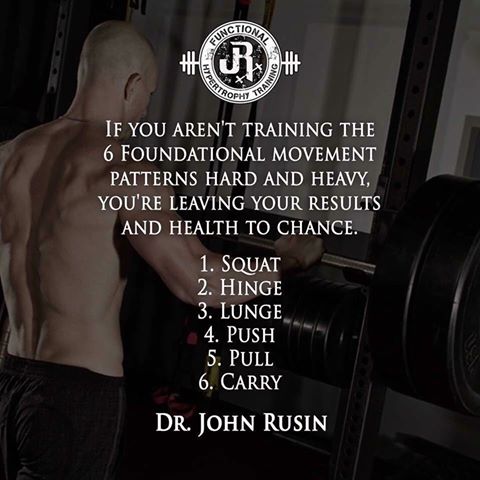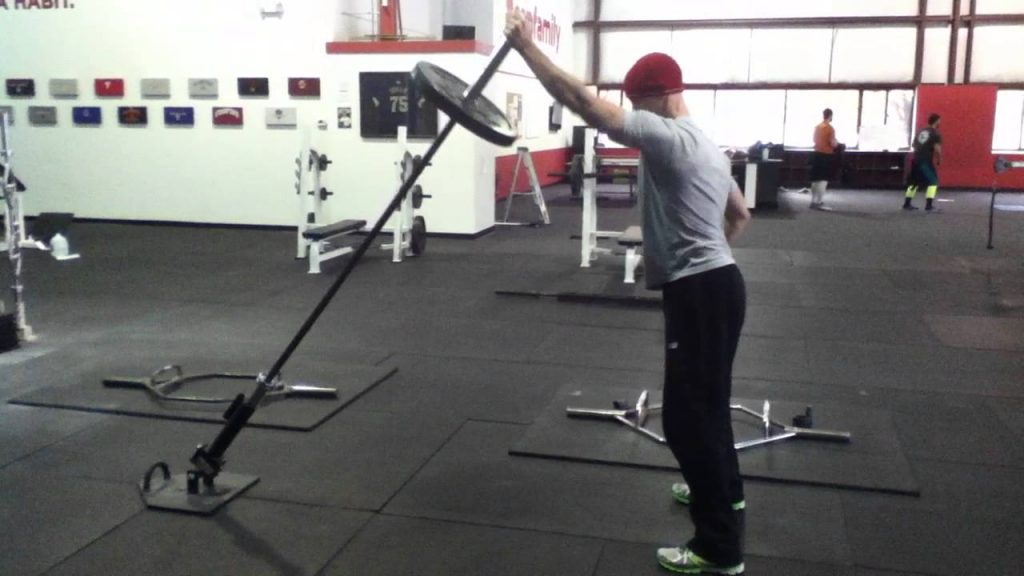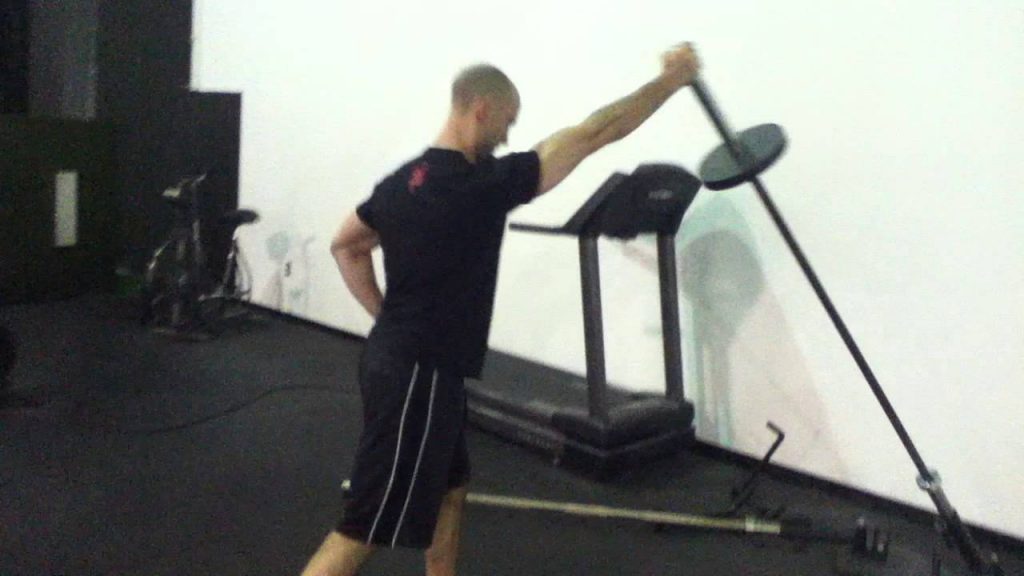At the expense of coming across as the cantankerous, meanie-head strength coach for saying it, I’m going to go a head and say it anyways:
Exercise, for most people, most of the time, should be mind-numbingly monotonous.
Boring.
It should be boring.

I get it: boring isn’t sexy. And it sure as shit doesn’t help sell DVDs or keep people’s attention at 3 o’clock in the morning watching the latest infomercial on how performing 47 different bodyweight calisthenics while juggling two machetes – you know, to keep the body guessing – is the key to your ultimate body.
BONUS: If you order within 30 minutes you’ll also receive a month’s supply of grass-fed acai berries soaked in the belly-button sweat of a Centaur.
Because, why the fuck not? And, science.
People have been sold on the idea of incessant novelty and variety being the determining factor in getting results at the gym.
I disagree.
“The greatest gap in most people’s training isn’t lack of novelty, but rather lack of mastery.”
It’s telling, then, that many of the most popular training programs around and top coaches in the industry often predicate their roots and training around these basic movements: squat, hinge, push, pull, lunge, carry.1 That’s it.

That’s about as un-sexy as it gets.
However, what’s often lost in the age of exercise ADD is that those six categories alone can be broken down into hundreds of iterations when you factor in variances in grip used, stance used, sets/reps, load, tempo, speed of movement, not to mention barbell vs. dumbbell vs. kettlebell vs. bulldozer (depending on how ginormous of a human you are).
There’s more than enough variety to keep even the most strident exercise enthusiast satiated for a fitness lifetime.
To that end, I can see why some people aren’t as enamored with the Landmine Press as others.

Upon first glance it’s the vanilla ice-cream or NASCAR of the strength and conditioning world.
“Oh, you mean, like, you just press the barbell up and down like that? At an angle? Repeatedly?
Cool.”
It’s nerds like me who can see the bigger picture and can appreciate how valuable of an exercise/drill the Landmine Press is.
I’ve waxed poetic enough in the past on the importance of overhead mobility and people’s lack of ability to do so in a safe and efficient manner.
You can check THIS article out; or THIS one; or THIS one; or not.
I’m cool either way.
In the end, it’s a fantastic, joint-friendly way to perform “fake” overhead pressing for those who lack the requisite range of motion to do so.
Pressing up and down, at an angle, indeed, while seemingly boring, helps keep people out of their “danger zone”…yet still glean an effective training effect that helps build strong shoulders, core, and general levels of badassery.
And as much of a champion of monotony as I am, I can appreciate that, after a certain amount of time, it’s often prudent to up the ante and provide more excitement and, GASP, variety to the movement.
Here Are Some of My Favorite Progressions/Regressions/Lateralizations (Whatever Word Piques Your Interest Most) of the Landmine Press
1) A Quick Primer on Set-Up and Execution
In general, much how I program my warm-ups, I prefer to progress my landmine variations from the ground to standing. When you adopt a tall kneeling or half-kneeling stance you take joints out of the equation (ankles, knees, hips, lumbar spine) and provide less of a window for people to default to aberrant movement patterns that can cause injury or exacerbate any painful symptoms they may have.
2) Tall Kneeling 1-Arm Landmine Press
I should note there are a handful of tenets with regards to technique across the board:
- Abs and glutes engaged. Both will nudge people into a little more posterior pelvic tilt and less likely to crank through their lumbar spine.
- If you are performing these 1-arm at a time I like to cue people to make a fist with their free hand to encourage more full-body tension.
- The shoulder of the working arm should not “dip” or round forward on the lowering phase.
- Keep the chin tucked.
- When appropriate, there should be a slight “reach” (or shrug) at the top to more fully engage the upper traps (which play a role in scapular upward rotation).
- Also when appropriate, play some Wu-Tang.
3) Half Kneeling 1-Arm Landmine Press
This is probably my favorite variation regardless. I like this one because we’re hitting a lot of problematic areas at once: shoulder health (upward rotation), rotary stability, hip flexor length, and glute activation (on kneeling side).
I prefer to coach people to dorsiflex the toes of the back foot (dig them into the ground), but in the end it comes down to whatever feels better for the person.
4) Half Kneeling Sideways Landmine Press
This is one I stole from my buddy Dean Somerset.
Here we’re training more in the frontal plane, which is important…cause we should get people out of the sagittal plane once they master it.
NOTE: you could also combine this one into a 1-arm clean-to-press hybrid movement if you wanted.
Honeybadger don’t give a shit.
5) Plain Ol’ Boring Standing 1-Arm Landmine Press
You can toss in a few curveballs here. You can adopt a staggered stance (one foot in front of the other), which makes things more challenging due to a narrower base of support.
You can also add bands into the mix.
6) Band Resisted Landmine Press
I like adding bands because it provides an added challenge to the anterior core musculature, in addition to forcing the lifter to control the eccentric portion of the lift more.
We can also make the case it “saves” the shoulders even more in that the band automatically decelerates the movement at the top.
Also, on a side note: When the hell are Jon Snow and Daenerys going to hook up on Game of Thrones?
7) Side to Side Landmine Press
This is a great option for when you want to be a little more aggressive with loading.
8) 2/1 Technique Landmine Press
The 2/1 technique is a concept I picked up from Christian Thibaudeau years ago, and something I’ve used in my own programming and that of my clients ever since.
We all know that we can handle more weight on the yielding (eccentric) portion of any lift compared to the overcoming (concentric).
The 2/1 technique takes this into account.
The idea is simple: Press up with both arms (preferably, in an explosive manner) and lower with one under control.
9) Deep Squat 1-Arm Landmine Press (<– Only For Those Who Want to Hate Life)
I hate this one so much. And by hate, I mean love.2
Assume a “deep” squat position and press away.
This can also be performed 1-arm at a time.3.
10) Z Landmine Press
I wasn’t sure where to place this one, so I guess I broke my “from the ground up” rule here.
Whatever, it’s my blog, I can do whatever I want.
Like, yell out “I’m Batman!” or post a picture of a unicorn shitting rainbows and cupcakes.
This one is a doozy and requires someone exhibits sufficient t-spine extension to perform well. Even though it’s a ground-based variation I’d be reticent to place have beginners perform this one.
That’s It, Folks
I hope you learned a few new variations in today’s post. If you have some of your own you’d like to share please feel free to post them in the comments section here or on Facebook.
BONUS Option
Because nine sucks, here’s a 10th variation.
Viking Landmine Press
If you have the Viking attachment (which you can purchase HERE) you can add another nice variation, which includes a neutral grip option.
Helmets sold separately.




